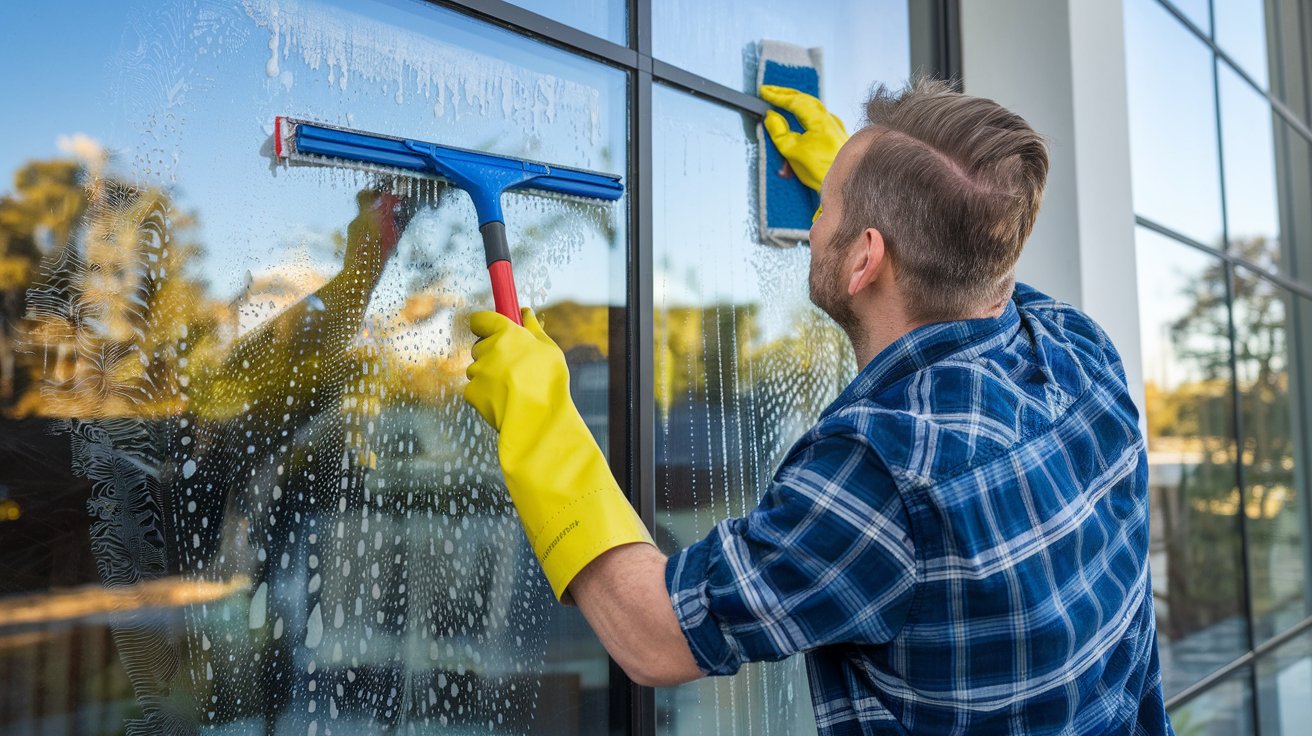Tom used to dread cleaning. Scrubbing, wiping, and rinsing felt like a never-ending chore, leaving him exhausted. He’d spend hours trying to make everything spotless, only to see streaks, leftover dust, or grime still clinging to surfaces. It wasn’t until he discovered one simple tool that his entire cleaning routine changed. This tool didn’t just make cleaning easier—it cut his cleaning time in half.
If you’ve ever wished for a faster, more effective way to clean, this could be the game-changer you need. Let’s dive into why cleaning often takes longer than necessary and how this one tool can make all the difference.
Why Cleaning Takes So Long Without the Right Tool
Cleaning isn’t just about effort—it’s about using the right approach. Many people spend way too much time on household chores simply because they’re relying on outdated or ineffective methods.
Here are some common reasons why cleaning takes longer than it should:
- Using the wrong tools – Sponges, paper towels, and regular cloths don’t always absorb dirt properly. Instead of trapping grime, they spread it around.
- Too much scrubbing – Stubborn stains require serious elbow grease if you don’t have an effective tool to lift them easily.
- Excessive rinsing – Constantly rinsing and wringing out sponges or cloths wastes both time and water.
- Streaks and residue – Some materials leave streaks on glass and stainless steel, forcing you to go over the same spot multiple times.
- Switching between multiple products – If you need different cleaners for every surface, cleaning becomes a slow, frustrating process.
Tom used to deal with all of these issues. But once he switched to a more efficient tool, cleaning became a breeze.
The One Tool That Changed Everything
The microfiber cleaning cloth is the tool that transformed Tom’s cleaning routine. Unlike traditional sponges or rags, microfiber traps dust, grease, and grime in a single swipe—without requiring harsh chemicals.
Why Microfiber Works Better
Microfiber is made from ultra-fine fibers that create a powerful cleaning surface. Here’s why it’s more effective than traditional materials:
- Super absorbent – Microfiber holds up to seven times its weight in water, meaning fewer trips to the sink.
- Traps dirt and dust – Instead of pushing debris around, it actually lifts and holds particles.
- No streaks or lint – Leaves glass, mirrors, and stainless steel surfaces spotless.
- Works with just water – You don’t need strong chemical cleaners to get results.
- Durable and reusable – Lasts through hundreds of washes, making it an eco-friendly option.
Tom didn’t expect such a simple change to have such a big impact, but once he started using microfiber cloths, he realized he could get the same sparkling results in half the time.
How Tom Uses Microfiber to Clean Faster
Switching to microfiber completely changed Tom’s approach to cleaning. Instead of wasting time scrubbing and rinsing, he follows a simple method that makes every task more efficient.
Tom’s Time-Saving Cleaning Routine
- Dry dusting first – He starts with a dry microfiber cloth to pick up dust before adding moisture.
- Damp wiping for deep cleaning – A lightly dampened cloth lifts dirt, grease, and fingerprints in one swipe.
- No excess product use – Instead of soaking surfaces with cleaner, he uses just a small amount when needed.
- Buffing for a streak-free shine – A dry microfiber cloth finishes the job on windows, mirrors, and shiny surfaces.
Because microfiber works so efficiently, Tom doesn’t have to scrub or repeat steps. One pass is usually enough to get surfaces completely clean.
The Best Surfaces to Clean with Microfiber
Microfiber isn’t just for one task. Tom quickly realized he could use it all over the house, reducing the need for multiple cleaning products and tools.
- Windows and mirrors – No streaks, no smudges, just crystal-clear glass.
- Kitchen counters – Picks up crumbs, spills, and grease effortlessly.
- Stainless steel appliances – Removes fingerprints and leaves a polished look.
- Wood furniture – Attracts dust without scratching the surface.
- Bathroom surfaces – Easily wipes away water spots and soap scum.
- Floors – Works as a dry or damp mop, trapping dirt instead of spreading it around.
By using microfiber across multiple surfaces, Tom eliminated unnecessary tools and products, making cleaning faster and more efficient.
How to Care for Microfiber Cloths
To keep microfiber cloths working at their best, Tom follows a few simple care tips. Unlike regular rags, microfiber requires special handling to maintain its effectiveness.
Tom’s Microfiber Maintenance Tips
- Avoid fabric softener – It clogs the fibers, reducing their ability to trap dirt.
- Wash separately – Lint from cotton fabrics can get stuck in microfiber.
- Use mild detergent – Harsh chemicals can break down the fibers over time.
- Air dry or use low heat – High temperatures damage microfiber, making it less effective.
By properly maintaining his microfiber cloths, Tom ensures they stay just as effective wash after wash.
Other Tools That Make Cleaning Even Faster
While microfiber is Tom’s go-to cleaning tool, he also uses a few other items to speed up the process even more.
Bonus Tools for Quick Cleaning
- Squeegee – Perfect for glass surfaces, making window cleaning effortless.
- Spray bottle with vinegar and water – A natural cleaner that pairs well with microfiber.
- Scrub brush – Helps with tough grime in grout lines and sinks.
- Cordless vacuum – Great for quick clean-ups without dragging out a heavy machine.
These extra tools complement microfiber and make it even easier to get things done in record time.
Why Microfiber is the Best Cleaning Investment
Switching to microfiber cloths was the best decision Tom ever made for his cleaning routine. Not only did it cut his cleaning time in half, but it also reduced his need for expensive cleaning products.
What makes microfiber the best choice?
- Faster cleaning – No more scrubbing or repeating steps.
- Less effort required – Cleans effectively with minimal physical strain.
- Eco-friendly – Reduces waste from paper towels and chemical cleaners.
- Cost-effective – One cloth lasts for hundreds of uses.
Cleaning doesn’t have to take hours. With the right tools—especially microfiber—you can get spotless results in a fraction of the time. Try it out and see how much time you save!






